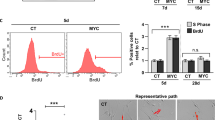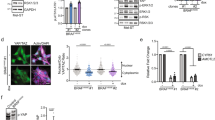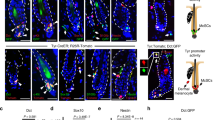Abstract
Murine and human melanoma cells differ relatively reliably from non-tumorigenic melanocytes in certain biological properties. When cultured at low pH, melanocytes tend to be pigmented and melanoma cells unpigmented. The growth of virtually all metastatic melanoma cells is inhibited by phorbol esters such as TPA (12-O-tetradecanoyl phorbol-13-acetate), which stimulate melanocyte growth. Melanocytes fail to grow in suspension culture or produce tumours when implanted in animals, while many melanoma lines can do both. Here we studied which of these properties were dominant in hybrid cells formed by fusion of drug-resistant murine B16-F10RR melanoma cells to melanocytes of the albino and brown lines, melan-c and melan-b. The albino melanocytes are unpigmented but well-differentiated, the brown melanocytes produce pale brown pigment and the melanoma cells are unpigmented under the conditions used. All hybrid colonies observed produced black pigment, except some melan-b/melanoma hybrids when growing sparsely with TPA. Thus pigmentation was generally dominant. 14/15 hybrid lines showed stimulation of proliferation by TPA, as do melanocytes. Most hybrid lines showed no or reduced capacity for growth in suspension, though some grew better in suspension when TPA was present. There was marked suppression of the tumorigenicity of the parental melanoma cells in 4/8 hybrids examined, and tumorigenicity was reduced in the others, despite considerable chromosome loss by the passage level tested. Thus most properties of the non-tumorigenic pigment cells were dominant, as often observed for other cell lineages, and providing further evidence for gene loss in the genesis of malignant melanoma.
This is a preview of subscription content, access via your institution
Access options
Subscribe to this journal
Receive 24 print issues and online access
$259.00 per year
only $10.79 per issue
Buy this article
- Purchase on Springer Link
- Instant access to full article PDF
Prices may be subject to local taxes which are calculated during checkout
Similar content being viewed by others
Author information
Authors and Affiliations
Rights and permissions
About this article
Cite this article
Wakeling, W., Greetham, J., Devlin, L. et al. Suppression of properties associated with malignancy in murine melanoma-melanocyte hybrid cells. Br J Cancer 65, 529–537 (1992). https://doi.org/10.1038/bjc.1992.110
Issue Date:
DOI: https://doi.org/10.1038/bjc.1992.110
This article is cited by
-
Experimental metastasis and differentiation of murine melanoma cells: actions and interactions of factors affecting different intracellular signalling pathways
Clinical & Experimental Metastasis (1994)



